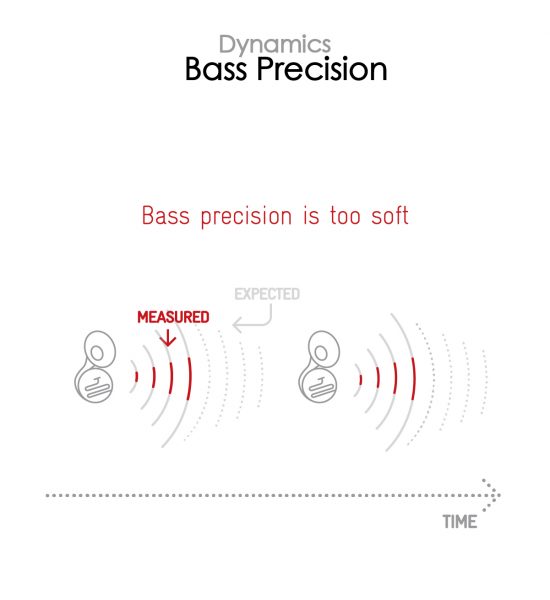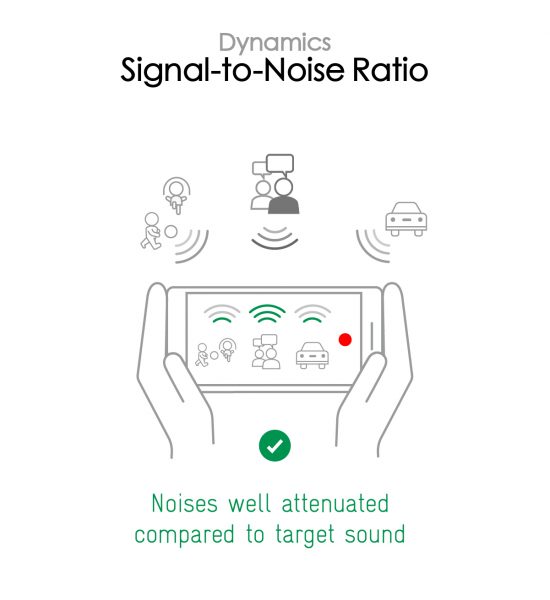We put the Nothing Phone(1) through our rigorous DXOMARK Audio test suite to measure its performance both at recording sound using its built-in microphones, and at playing audio back through its speakers.
In this review, we will break down how it fared in a variety of tests and several common use cases.
Overview
Key audio specifications include:
- Two speakers (top front and bottom side firing)
- No Jack audio output
Scoring
Sub-scores and attributes included in the calculations of the global score.

Nothing Phone(1)


 170th
170th 25th
25thPlayback
Pros
- Not much distortion at maximum volume
Cons
- Poor performance overall
Recording
Pros
- Very good Audio Zoom Performance
- Very good Wind Noise Performance
- Excellent SNR
- Very good resilience at high-SPL, distortion is usually not too noticeable
Cons
- Overall dark tonal balance
- Excessive noise cancellation algorithm in use cases, causes many artifacts
- Poor handling of hands occlusions
The Nothing Phone (1) is far from the upper echelons in our Audio ranking. It does poorly overall, but it benefits from having an acceptable amount of distortion at maximum volume. It’s not really a great pick for any playback use case, but it is best suited to watching movies. Music lovers and gamers should probably keep an eye out for alternatives.
The phone performs slightly better in Recording than for Playback, but there is some variance between use cases. Sound quality is best when recording with the main camera, followed by office applications. Quality drops noticeably when using the front camera for selfie videos. In Recording, our testers liked the Nothing Phone’s audio zoom performance and found it to be quite effective at eliminating unwanted wind noises. It also offered an excellent signal-to-noise ratio and good resilience at high sound-pressure levels, where distortion remained well under control. This makes it an option for recording at concerts and similar events.
On the downside, recording tonal balance is overall dark, and over-enthusiastic noise cancellation algorithms cause a variety of artifacts. The phone is also quite prone to occlusion of the microphone with your hands. If you’re not careful where you place your hands, recordings could be pretty much useless.
Test summary
About DXOMARK Audio tests: For scoring and analysis in our smartphone audio reviews, DXOMARK engineers perform a variety of objective tests and undertake more than 20 hours of perceptual evaluation under controlled lab conditions.
(For more details about our Playback protocol, click here; for more details about our Recording protocol, click here.)
The following section gathers key elements of our exhaustive tests and analyses performed in DXOMARK laboratories. Detailed performance evaluations under the form of reports are available upon request. Do not hesitate to contact us.
Playback
Nothing Phone(1)
163
DXOMARK engineers test playback through the smartphone speakers, whose performance is evaluated in our labs and in real-life conditions, using default apps and settings.
As an audio playback device, the Nothing Phone’s performance is below average across nearly all test attributes. In terms of timbre, it focuses on the high-midrange and lower treble, resulting in a thin and nasal sound, with almost absent bass and low-midrange. Dynamics leave some room for improvement as well, due to sub-optimal sound processing. Attack is very weak, and bass precision is impaired by out-of-control volume fluctuations at nominal volume and compression at max volume. Punch is fine but, like bass precision, it is negatively impacted by compression and gating.
Spatial performance is overall sub-par, and while loudness is decent at maximum volume, at minimum volume, you can hardly hear anything. In addition, volume steps are inconsistent. Our testers also encountered a variety of sound artifacts on the Nothing Phone, including numerous unpredictably behaving temporal artifacts, some form of gating at all volume levels, multi-band processing, and compression. It’s too easy to accidentally occlude the right speaker if your hand is placed too high or low as well, and our testers found it frustrating that music resumes playing when the user returns to the app from sleep or another application.
Listen to the tested smartphone’s playback performance in this comparison with some of its competitors:

Timbre
Nothing Phone(1)
158
The Timbre score represents how well a phone reproduces sound across the audible tonal range and takes into account bass, midrange, treble, tonal balance, and volume dependency. It is the most important attribute for playback.

Dynamics
Nothing Phone(1)
149
The Dynamics score measures the accuracy of changes in the energy level of sound sources, for example how precisely a bass note is reproduced or the impact sound from drums.



Spatial
Nothing Phone(1)
162



Volume
Nothing Phone(1)
162
The Volume score represents the overall loudness of a smartphone and how smoothly volume increases and decreases based on user input.
| Hip-Hop | Classical | |
| Nothing Phone(1) | 74.2 dBA | 74 dBA |
| Oppo Reno8 5G | 70.4 dBA | 72 dBA |
| Google Pixel 6 | 74.9 dBA | 69.6 dBA |

Artifacts
Nothing Phone(1)
157
The Artifacts score measures the extent to which the sound is affected by various types of distortion. The higher the score, the less the disturbances in the sound are noticeable. Distortion can occur because of sound processing in the device and because of the quality of the speakers.


It represents the distortion and noise of the device playing our test signal (0 dB Fs, Sweep Sine in an anechoic box at 40 cm) at the device's maximum volume.
Recording
Nothing Phone(1)
160
DXOMARK engineers test recording by evaluating the recorded files on reference audio equipment. Those recordings are done in our labs and in real-life conditions, using default apps and settings.
The Nothing Phone (1) does overall better as a recording device than for playback, but it still isn’t close to the best in class. Timbre performance leaves some room for improvement, with weak treble, a lack of bass control, and generally a lot of variance between apps and use cases. Our testers also found dynamics to be poor, with a rounded attack and overall inaccurate envelope. Things look slightly better for spatial, but there are a few things you should keep in mind for best results for this attribute.The ability to locate sound sources in the scene is above average when recording with the main camera and sound recorder, but deteriorates when you switch cameras to record a selfie clip. Wideness is great when holding the phone in landscape orientation while recording, but becomes extremely narrow in portrait orientation.
Recording volume is quiet in most use cases, but our objective measurements show that the phone does well for recordings at high sound pressure levels, for example, concerts, with only slight distortion. Like in Playback, artifacts can be problematic in recording. Noise cancellation results in a variety of artifacts, including gating, comb-filtering, compression in memo recordings, and extreme pumping at high sound pressure levels. At loud recording volumes, we also observed distortion and clipping. Hand position is crucial, as occluding the microphone renders recordings completely useless.
Background performance is overall poor, with a dark tonal balance as well as gating and other artifacts that are caused by noise cancellation algorithms with the front camera.
Here is how the Nothing Phone(1) performs in recording use cases compared to its competitors:

Timbre
Nothing Phone(1)
147
The Timbre score represents how well a phone captures sounds across the audible tonal range and takes into account bass, midrange, treble, and tonal balance. It is the most important attribute for recording.

Dynamics
Nothing Phone(1)
146
The Dynamics score measures the accuracy of changes in the energy level of sound sources, for example how precisely a voice's plosives (the p's, t's and k's, for example) are reproduced. The score also considers the Signal-to-Noise Ratio (SNR), for example how loud the main voice is compared to the background noise.



Spatial
Nothing Phone(1)
159
The sub-attributes for spatial tests include pinpointing a specific sound's location, its positional balance, distance, and wideness on the recorded audio files.



Volume
Nothing Phone(1)
170
The Volume score represents how loud audio is normalized on the recorded files and the how the device handles loud environments, such as electronic concerts, when recording.
| Meeting | Life Video | Selfie Video | Memo | |
| Nothing Phone(1) | -27.6 LUFS | -19.1 LUFS | -18.7 LUFS | -20.5 LUFS |
| Oppo Reno8 5G | -23.4 LUFS | -21.3 LUFS | -19.8 LUFS | -17.8 LUFS |
| Google Pixel 6 | -27.8 LUFS | -17.9 LUFS | -16.3 LUFS | -19.8 LUFS |

Artifacts
Nothing Phone(1)
145
The Artifacts score measures the extent to which the recorded sounds are affected by various types of distortions. The higher the score, the less the disturbances in the sound are noticeable. Distortions can occur because of sound processing in the device and the quality of the microphones, as well as user handling, such as how the phone is held.


In this audio comparison, you can listen to the way this smartphone handles wind noise relative to its competitors:

Background
Nothing Phone(1)
166
Background evaluates how natural the various sounds around a voice blend into the video recording file. For example, when recording a speech at an event, the background should not interfere with the main voice, yet it should provide some context of the surroundings.





DXOMARK encourages its readers to share comments on the articles. To read or post comments, Disqus cookies are required. Change your Cookies Preferences and read more about our Comment Policy.